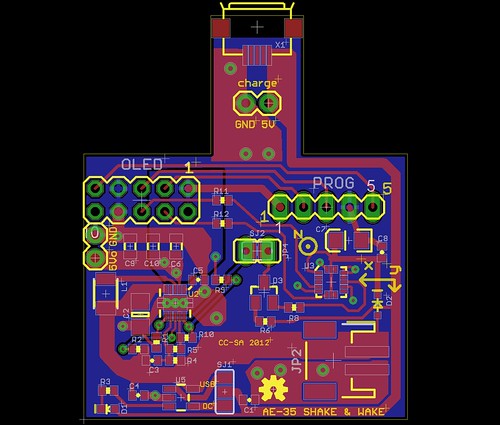Wednesday, April Wednesday, 2013
Shake-And-Wake PCB Board Design
Here's something I've been working on for a little while. My friends Scott and JD designed a neat digital snow globe that uses an OLED display in the base. Obviously it should turn on when you shake it!
So I helped them out by designing the power conditioning board you see here. Its function is simple – turn on the power when it feels a shake – but it took some pretty sophisticated electronics to get there from a battery. First of all it uses a LIPO battery, which takes some care to charge and discharge – if you are not careful you can ruin it by discharging it too much, or worse, set it on fire by improperly charging it. Fortunately this is a very common problem so there are dedicated charging circuits to do exactly that: I used a MAX1555 IC.
The OLED display needs a solid 5.0 volts, but the battery puts out 3.7 volts which diminishes as it discharges, so I added a switching power supply using a TI TPS61200 boost converter circuit to provide a steady voltage regardless of battery charge.
Finally, the circuit needs to wake when shaken, so there's a LIS331HH accelerometer that can detect motion. This one has a low-power mode so we can put everything else to sleep to save battery power. There's an annoying bootstrapping problem: we need to wake up the OLED module the first time to program the accelerometer to wake us up again, so there's a little additional circuit to do that: a diode-OR gate in what Don Lancaster called MML (for "Mickey Mouse Logic"). This turns on the boost converter if the charging voltage is present, or if the accelerometer sends a wake-up signal.

So we made 100 of these as gifts for the new Exploratorium VIP opening on Tuesday night. I'll have more pictures and info when I get one for myself, as I fail at being a VIP!